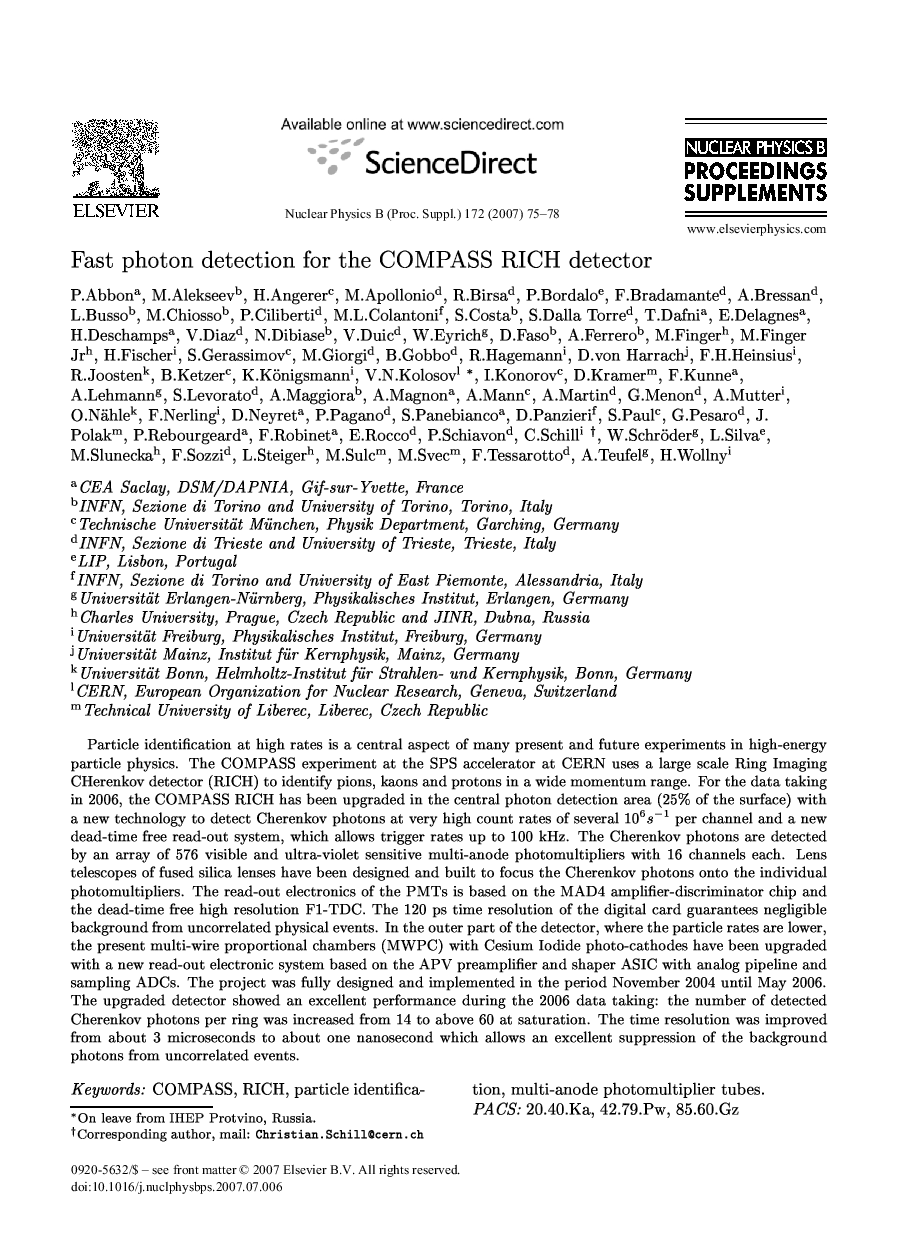| کد مقاله | کد نشریه | سال انتشار | مقاله انگلیسی | نسخه تمام متن |
|---|---|---|---|---|
| 1846979 | 1528122 | 2007 | 4 صفحه PDF | دانلود رایگان |

Particle identification at high rates is a central aspect of many present and future experiments in high-energy particle physics. The COMPASS experiment at the SPS accelerator at CERN uses a large scale Ring Imaging CHerenkov detector (RICH) to identify pions, kaons and protons in a wide momentum range. For the data taking in 2006, the COMPASS RICH has been upgraded in the central photon detection area (25% of the surface) with a new technology to detect Cherenkov photons at very high count rates of several 106s−1 per channel and a new dead-time free read-out system, which allows trigger rates up to 100 kHz. The Cherenkov photons are detected by an array of 576 visible and ultra-violet sensitive multi-anode photomultipliers with 16 channels each. Lens telescopes of fused silica lenses have been designed and built to focus the Cherenkov photons onto the individual photomultipliers. The read-out electronics of the PMTs is based on the MAD4 amplifier-discriminator chip and the dead-time free high resolution F1-TDC. The 120 ps time resolution of the digital card guarantees negligible background from uncorrelated physical events. In the outer part of the detector, where the particle rates are lower, the present multi-wire proportional chambers (MWPC) with Cesium Iodide photo-cathodes have been upgraded with a new read-out electronic system based on the APV preamplifier and shaper ASIC with analog pipeline and sampling ADCs. The project was fully designed and implemented in the period November 2004 until May 2006. The upgraded detector showed an excellent performance during the 2006 data taking: the number of detected Cherenkov photons per ring was increased from 14 to above 60 at saturation. The time resolution was improved from about 3 microseconds to about one nanosecond which allows an excellent suppression of the background photons from uncorrelated events.
Journal: Nuclear Physics B - Proceedings Supplements - Volume 172, October 2007, Pages 75-78